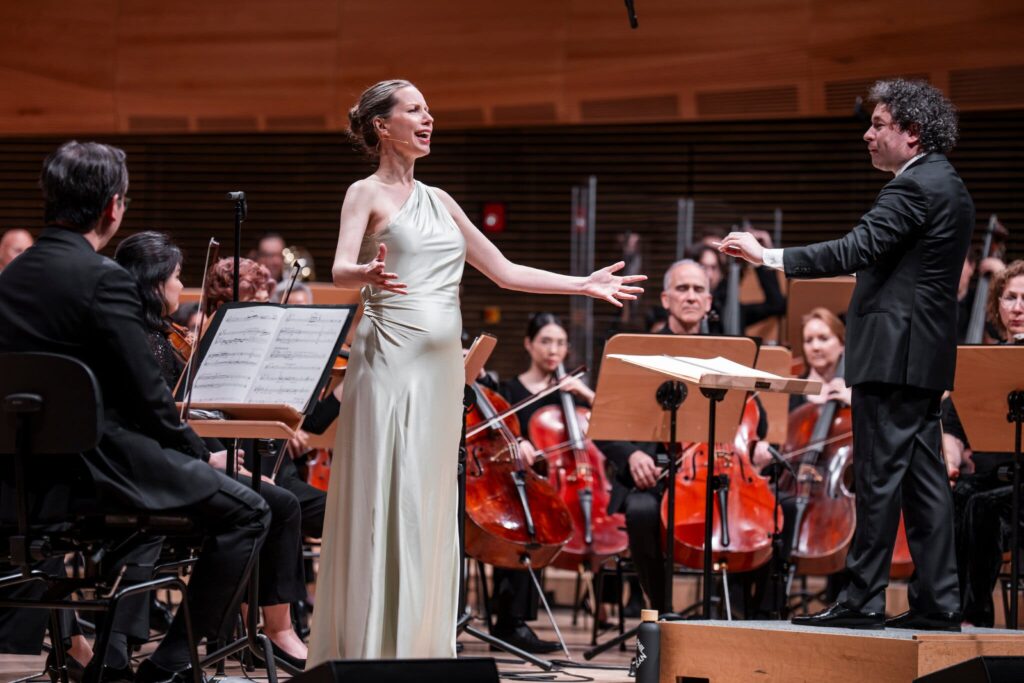THE HANGOVER REPORT – Dudamel returns, incisively leading the NY PHILHARMONIC in a love letter to the symphonic form
- By drediman
- May 24, 2025
- No Comments

To the delight of many music fans, the New York Philharmonic’s incoming music director Gustavo Dudamel has returned to close out the orchestra’s 2024/2025 season. The first of these Dudamel-led programs can be seen as a thoughtful love letter to the Philharmonic and, more broadly, the symphonic form. Kicking things off was Igor Stravinsky’s Symphony in Three Movements, which happens to be the ensemble’s first commissioned work (the Philharmonic unveiled the work at Carnegie Hall in 1946). These days, it’s more often heard across the plaza when the New York City Ballet dances to the piece, so it was a pleasant surprise to find it in the program. Dudamel produced a focused rendition, reining in the work’s eccentricities, while navigating its array of rhythms with a natural sense of play.
Then came the world premiere of Orpheus Orchestra Opus Onus, Kate Soper’s philosophical yet accessible composition that overlays her poetically-rendered theories on music onto the well-trodden Orpheus and Eurydice myth. Performed by Soper equally in both dialogue and song, the piece is an episodic affair that embraces artful thematic repetition and intense orchestral outbursts, all the while giving the audience a jovial tour of the breadth and majesty of the symphonic form. The work is also unafraid to show a less serious side. Indeed, the occasional smirking tone often coaxed chuckles from the sold out audience as Soper stealthily honed in on the bottom line of her thesis — that music, at once merely wisps yet limitless in expressivity, is in essence the manifestation of the sublime.
The concert concluded with a simmering but ultimately inspired performance of another uniquely American symphony, Philip Glass’s Symphony No. 11, which is arguably one of the composer’s finest symphonies to date. Unfolding luxuriously over three movements, the piece exudes the composer’s staple conventions (e.g., glacial progressions, abruptly shifting rhythmic patterns). But there are fascinating new orchestral colors that pervade the piece — particularly in the third movement — that distinguishes it from Glass’s usual output, and it ends thrillingly with a percussive storm that roused the audience out of their seats. Throughout the 40-minute piece, the New York forces played with contained energy and sustained tension — kept in check by Maestro Dudamel’s ecstatic yet incisive conducting.
RECOMMENDED
NEW YORK PHILHARMONIC
Classical Music
David Geffen Hall
2 hours (including an intermission)
Through May 25

 Copyright © 2025
Copyright © 2025
Leave a Reply